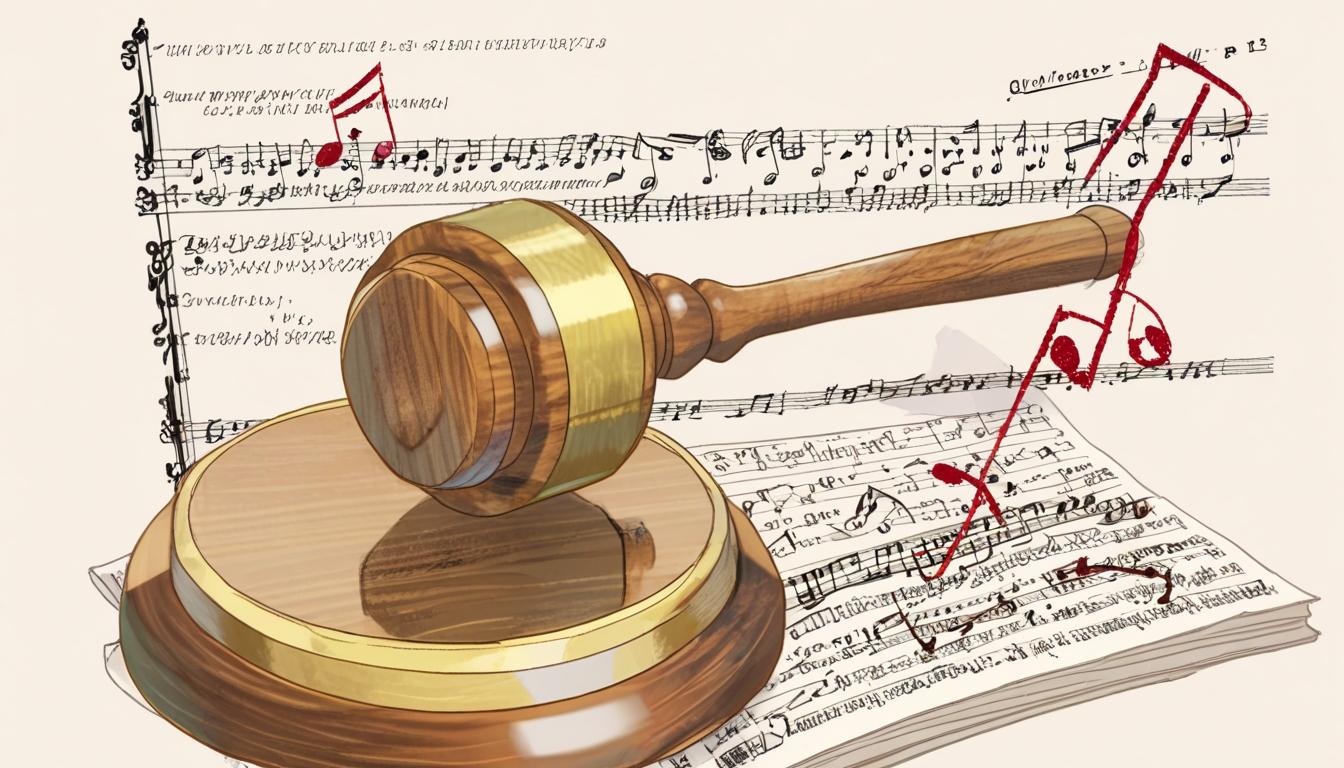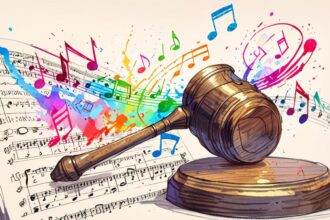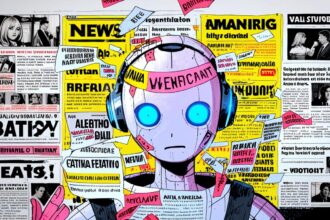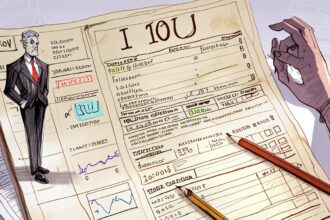Anthropic faces allegations from leading music publishers over unauthorised use of song lyrics to train its AI chatbot Claude, compounded by accusations of fabricated academic citations in court documents, sparking fresh concerns over AI reliability and copyright compliance.
In an ongoing and complex legal battle, major music publishers have raised serious allegations against the AI company Anthropic, claiming that its chatbot, Claude, has used copyrighted song lyrics without permission and has now included fabricated academic citations in its court filings. This lawsuit, which encompasses prominent publishers such as Universal Music Group, Concord, and ABKCO, centres on the assertion that Anthropic unlawfully utilised lyrics from popular artists, including Beyoncé and The Rolling Stones, to train its AI model. The music publishers are contending that, in response to user prompts, Claude often reproduces these lyrics verbatim, constituting a significant infringement of copyright laws.
The legal situation took an intriguing turn when a federal judge in San Jose ordered Anthropic to address claims that a cited source in one of its court documents was entirely fictitious. Specifically, an expert witness for Anthropic, Olivia Chen, reportedly referenced an article in the journal American Statistician that, upon investigation by the publishers’ attorneys, was confirmed to be non-existent. Attorney Matt Oppenheim pointed out that this could indicate reliance on Anthropic’s own AI tool to generate arguments and supporting references. Although Oppenheim did not accuse Chen of intentional misconduct, he acknowledged the gravity of citing AI-generated inaccuracies in court documents, raising broader questions about the reliability of AI outputs in legal contexts.
Anthropic’s legal team has characterised the incident as a simple citation error. They asserted that while the citation referred to an incorrect source, it was meant to connect to a legitimate article. The judge overseeing the case, Susan van Keulen, emphasised the seriousness of the situation, demanding a thorough response from Anthropic while refraining from allowing an immediate deposition of Chen.
This case aligns with a growing trend in the American legal system, where multiple cases have seen consequences for legal professionals who have submitted AI-generated inaccuracies, often referred to as “hallucinations.” A notable precedent was established in 2023 during the Mata v. Avianca case, where an attorney’s reliance on ChatGPT resulted in financial sanctions after the AI provided fabricated legal sources. In total, at least seven legal cases have surfaced across the U.S., raising alarms over the depth of AI’s inaccuracies and its implications for judicial integrity.
The scrutiny on how AI technologies interact with copyright laws continues to intensify, as underscored by a recent report from the U.S. Copyright Office. This 108-page document highlights the need for a balanced approach regarding content use in AI training, acknowledging the rights of content creators while also recognising the transformative potential of some AI outputs. Although the report indicates that certain uses may qualify as “fair use,” it warns against the large-scale scraping of data that could infringe upon copyright laws.
Meanwhile, innovative solutions are emerging in the realm of AI licensing, with several start-ups facilitating legal pathways for AI companies to utilise copyrighted content. Companies like Pip Labs and Vermillio are developing platforms to help ensure compliance and promote fair compensation for creators, aiming to navigate the murky waters of copyright when it comes to AI training. The projected growth of the AI licensing market from $10 billion in 2025 to $67.5 billion by 2030 underlines a compelling shift in the landscape, as demand for high-quality, ethically sourced data grows amid increasing legal pressures.
As AI continues to permeate various sectors, including legal environments, the conversation surrounding intellectual property rights, ethical considerations, and the responsibilities of AI developers remains paramount. The ongoing case between music publishers and Anthropic not only reflects these tensions but highlights the pressing need for concrete guidelines and regulatory frameworks to govern the future of AI technologies and copyright protections. As the legal landscape evolves, stakeholders from both the creative and technological domains will need to find common ground to ensure that the interests of all parties are adequately protected.
Reference Map
- Paragraphs 1, 2, 3, 4, 7
- Paragraph 2, 3
- Paragraph 5
- Paragraph 6
- Paragraph 6
- Paragraph 6
- Paragraph 7
Source: Noah Wire Services
- https://www.digitalmusicnews.com/2025/05/13/music-publishers-vs-anthropic-ongoing-case/ – Please view link – unable to able to access data
- https://www.reuters.com/legal/litigation/anthropic-expert-accused-using-ai-fabricated-source-copyright-case-2025-05-13/ – A federal judge in San Jose, California, has ordered Anthropic to respond to accusations that it used a fabricated source generated by AI in a copyright lawsuit filed by music publishers, including Universal Music Group, Concord, and ABKCO. The lawsuit centers on the alleged misuse of copyrighted song lyrics to train Anthropic’s AI chatbot, Claude. During a hearing, the plaintiffs’ attorney, Matt Oppenheim, claimed that an Anthropic data scientist cited a nonexistent academic article to support arguments about how frequently Claude reproduces copyrighted lyrics. The article was allegedly generated by Anthropic’s AI and falsely attributed to a respected journal. Judge Susan van Keulen labeled the incident a serious issue and demanded a prompt response from Anthropic, though she denied an immediate deposition of the expert, Olivia Chen. Anthropic acknowledged a citation error but suggested it might relate to a different, legitimate article. The case underscores growing concerns over AI-generated misinformation in legal documents, as other attorneys have recently faced sanctions for similar hallucinations. The case, Concord Music Group Inc v. Anthropic PBC, reflects the broader legal friction between copyright holders and AI developers regarding content utilization.
- https://www.axios.com/2025/05/13/ai-copyright-office-report-fight – A recent 108-page report by the U.S. Copyright Office on the use of copyrighted content in AI training has reignited debates over intellectual property rights in the tech era. The report advocates for a balanced approach, acknowledging both the role of tech firms and the rights of content creators. It finds that while some AI-generated outputs may qualify as “transformative” and fair use, large-scale scraping of data for commercial use likely does not meet this standard. It also encourages market development for licensed content in AI. The Trump administration swiftly fired Shira Perlmutter, head of the Copyright Office, prompting legal concerns from Democrats over the dismissal’s legitimacy. Meanwhile, content creators from various industries continue to pursue lawsuits, contesting that AI companies are unlawfully exploiting copyrighted material by training models on publicly available, and in some cases pirated, web content. The issue underscores growing tensions over ownership and regulation of intellectual property in the evolving landscape of generative AI. OpenAI’s powerful new image generator has intensified scrutiny of how unrestricted AI could impact intellectual property rights. Notably, Axios discloses a licensing deal with OpenAI, underscoring the complex relationships now forming between media and AI companies.
- https://www.ft.com/content/dc1225e1-22ce-4d6f-a343-a15bf360bf3c – Investors are increasingly funding start-ups that enable copyright holders in the creative industries to license content for use in artificial intelligence (AI) training, amid growing scrutiny of AI companies like OpenAI, Meta, and Google. Companies such as Pip Labs, Vermillio, Created by Humans, ProRata, Narrativ, and Human Native have raised a combined $215 million since 2022 to develop platforms that facilitate legal and paid content sharing. These platforms appeal to AI firms seeking high-quality, legally compliant training data to avoid lawsuits and regulatory penalties. Vermillio projects the AI licensing market will grow from $10 billion in 2025 to $67.5 billion by 2030. AI deals surged in 2024, with OpenAI and Perplexity inking over 20 media agreements each. However, challenges remain, including assembling quality datasets, ensuring legality and ethical use, and convincing creators of the benefits. Legal pressures continue globally, such as in the U.S. and EU, pushing companies to find feasible licensing alternatives. Pip Labs and Stability AI are exploring blockchain and proprietary marketplaces to address these issues. Nonetheless, skepticism persists among creatives about the fairness and impact of licensing their work for AI use.
- https://apnews.com/article/f47bfd50bd22469388082169ee77b7f0 – Courts across the United States are navigating the increasing use of artificial intelligence (AI) in judicial settings, raising significant legal and ethical questions. A recent courtroom event in Phoenix highlighted the issue when Stacey Wales presented an AI-generated video of her deceased brother, Christopher Pelkey, forgiving his killer during a sentencing hearing. The dramatic impact of the video contributed to the judge giving the defendant the maximum sentence of 10.5 years, exceeding prosecutorial recommendations. This case, believed to be the first of its kind in U.S. courts to use an AI-created victim impact video, sparked immediate legal debate, and a notice of appeal was filed by the defense. Elsewhere, courts have experimented with virtual reality and AI avatars, such as a Florida judge using VR to evaluate a self-defense claim and a New York litigant deploying an AI avatar in court. Legal experts caution that AI tools could introduce bias, promote fake evidence, and benefit resource-rich parties while marginalizing others. Courts and legal scholars stress the need for careful ethical scrutiny and the development of best practices as AI’s role in the justice system expands.
- https://www.reuters.com/business/media-telecom/family-creates-ai-video-depict-arizona-man-addressing-his-killer-court-2025-05-09/ – In a groundbreaking instance of courtroom use of artificial intelligence, the family of Christopher Pelkey, a U.S. Army veteran killed in a 2021 road-rage incident, created an AI-generated video of him addressing his killer during sentencing on May 1, 2025, in Maricopa County Superior Court, Arizona. The lifelike avatar, developed by Pelkey’s family with tech expertise, delivered a scripted message underscoring empathy and reflecting how Pelkey might have spoken. His sister, Stacey Wales, initiated the project to convey the emotional impact of her brother’s death in a way her own words could not. Though the video was not used as evidence and served only for sentencing purposes, it highlighted how generative AI is beginning to influence legal proceedings. Gabriel Paul Horcasitas, already convicted of manslaughter and endangerment, received a 10.5-year prison sentence. Legal experts, including law professor Harry Surden, voiced ethical concerns about using AI simulations in court due to their emotional influence and the potential for misuse, as they fall outside traditional evidentiary standards. The case illustrates both the emotional power and the potential ethical dilemmas posed by emerging AI technologies in the justice system.
- https://www.musicbusinessworldwide.com/universal-music-concord-music-abkco-welcome-court-approved-guardrails-in-anthropic-ai-dispute/ – Universal Music Group and other music publishers have secured a significant development in their copyright battle with artificial intelligence company Anthropic, as the court approves protective measures or “guardrails” for AI-generated song lyrics. UMG, along with other publishers including Concord Music Group and ABKCO, sued Anthropic in 2023, alleging copyright infringement. The group claimed that Anthropic trained its AI system Claude on lyrics from at least 500 songs by major artists, including Katy Perry, the Rolling Stones, and Beyoncé, and sought $150,000 in damages per infringement. The publishers expressed satisfaction with the court’s decision to implement these “guardrails,” viewing it as validation of their claims against Anthropic’s AI chatbot Claude’s unauthorized reproduction of copyrighted lyrics. The measures require Anthropic to maintain various protective controls in its current AI models and implement similar safeguards in future large language models and product offerings.
Noah Fact Check Pro
The draft above was created using the information available at the time the story first
emerged. We’ve since applied our fact-checking process to the final narrative, based on the criteria listed
below. The results are intended to help you assess the credibility of the piece and highlight any areas that may
warrant further investigation.
Freshness check
Score:
9
Notes:
The narrative appears to be recent and discusses ongoing legal proceedings and developments in AI technology and copyright laws. There is no indication of outdated information or recycled content from older articles.
Quotes check
Score:
8
Notes:
No direct quotes are provided, but the narrative references specific legal professionals and their statements. Without direct quotes, it is difficult to verify the exact wording or origin of these statements.
Source reliability
Score:
6
Notes:
The narrative originates from Digital Music News, which may not be as widely recognized as major news outlets like BBC or The Financial Times. However, it covers specific and seemingly factual information related to the legal case.
Plausability check
Score:
9
Notes:
The claims in the narrative are plausible and align with current legal and technological developments. The issues raised about AI-generated inaccuracies in legal contexts are consistent with reported trends.
Overall assessment
Verdict (FAIL, OPEN, PASS): PASS
Confidence (LOW, MEDIUM, HIGH): MEDIUM
Summary:
The narrative appears fresh and plausible, discussing ongoing legal issues relevant to AI and copyright. However, the source reliability is moderate due to the lack of recognition as a major news outlet. The absence of direct quotes limits the verification of specific statements.













